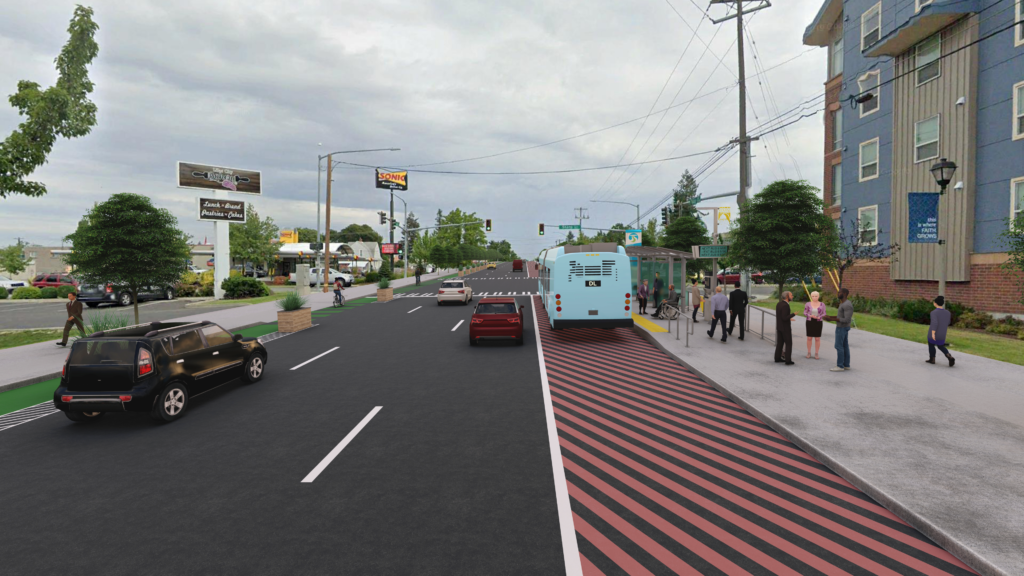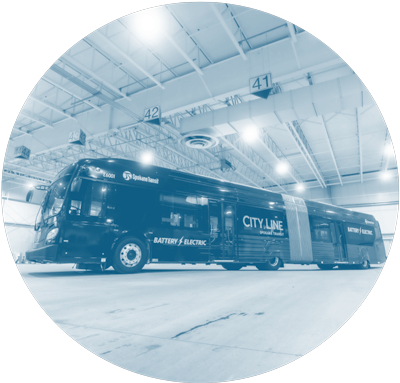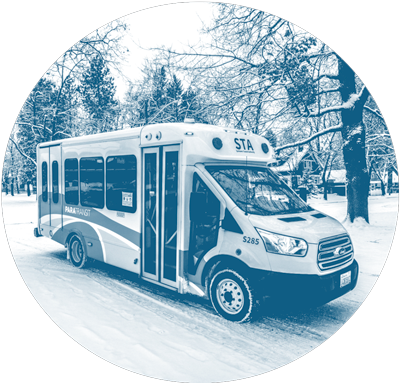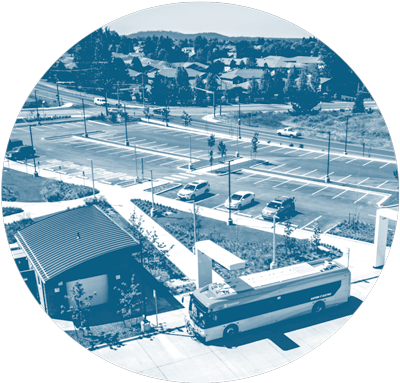A New Vision for Transit in the Region's Busiest Corridor
Project Description
Beginning in 2020, STA and Spokane Regional Transportation Council (SRTC) have been collaborating on a transportation and land use study of the Division Street corridor known as DivisionConnects. Phase 1 of this study had a large public engagement component and in-depth bus rapid transit (BRT) analysis. Through the evaluation process and input from a steering committee made up of members of the STA and SRTC boards, a locally preferred alternative (LPA) for a nearly nine-mile BRT route in the Division Street Corridor was identified and adopted by the STA and SRTC Board of Directors.
DivisionConnects Phase 2 is seeking to identify and recommend future land use opportunities that will support and complement the BRT line while seeking to understand the level of change desired in the corridor.
Locally Preferred Alternative
The locally preferred alternative (LPA) envisions the Division Line BRT to operate with zero-emission 60’ buses and will qualify as a “fixed-guideway” BRT project under the Federal Transit Capital Investment Grant program. The service plan is to operate at 10-minute frequency during weekdays and 15-minute frequency or better on nights and weekends. It is expected to run from the Spokane Central Business District near the STA Plaza, along Division to the current Route 25 terminal at Hastings Park & Ride in the short term, and a new transit center at Farwell and Highway 2 in the long term. The downtown alignment is to be determined in Preliminary Engineering. Stations will be placed at major intersections and near destinations.
Division Street BRT is expected to operate in side-running, dedicated Business Access and Transit (BAT) lanes for a majority of the alignment, primarily between North River Drive and the “Y”.
Protected bicycle facilities along Ruby Street with pedestrian, ADA and bicycle improvements throughout the corridor are also being explored.

Benefits
BRT stations can be similar to light rail stations in other cities; they are branded and provide transit benefits such as: near-level boarding, all-door boarding, off-board fare collection, dedicated right-of-way, transit signal priority, intersection treatments; and real time information signage. BRT services benefit communities in different ways such as:
- Saving money and time for riders and decreasing household transportation costs
- Traffic safety improvement by decreasing traffic congestion and calming car traffic to safer speeds
- Reducing greenhouse gas emissions with an electric bus fleet
- Public health improvement with better air quality and more opportunities for pedestrian and cycling activities
- Offering residents a competitive, smooth, reliable alternative to a private vehicle
- Increasing pedestrian comfort and safety through station design and location
Timeline
2020-2021 – STA and partner organizations (SRTC, City of Spokane, Spokane County and WSDOT) initiate corridor planning with community input.
2022-Beyond – The following phases and milestones are subject to stakeholder collaboration and project funding, including a potential $50 million allocation in the proposed state transportation revenue package.
2022
Begin preliminary engineering and environmental scoping
2023
Subject to funding and FTA approval, enter project development phase to undertake full design, engineering and environmental review.
2023 - 2024
Seek full funding for Division BRT project through state, federal and local sources.
2025
Construction of the project may begin.
2027 - 2029
Bus Rapid Transit will be introduced on Division Street in response to the upcoming opening of the North Spokane Corridor. This project will accommodate ridership growth and support economic redevelopment efforts.

Estimated Costs and Funding
Preliminary Cost Estimate: $120-150 million (2020$)
- Preliminary Engineering Funds: $2 million
- Project Development Funds: $12 million
- Seeking approximately $75 million in federal funds
- Seeking approximately $50 million in state funds
Full funding plan and a comprehensive budget will be developed during project development phase; figures above do not include cost escalation.





